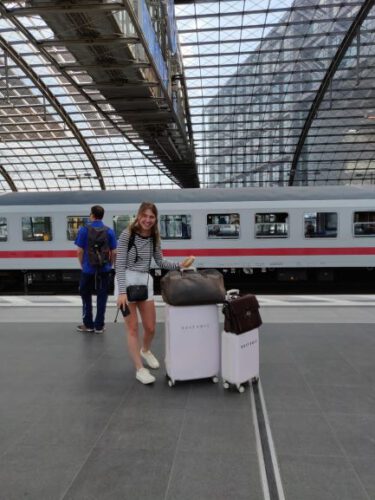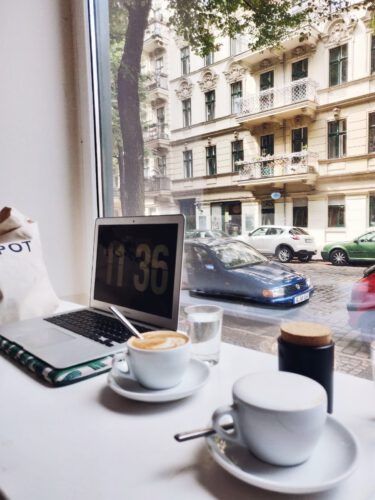My name is Evi, IDA alumni and now doing my PhD at the HSRI, but more about that in my interview on this website. I was asked to write a bit about my international traineeship, which of course I love to do. I warn you beforehand though, I am not very good at keeping it short, but I promise it is a good story 😉 – I think so.
For my international traineeship, I went to Berlin and attended a seminar on Continuous Time Structural Equation Modeling – an advanced statistical method for analyzing longitudinal data, such as Experience Sampling data. I went there together with a fellow student, Sari, who was (and is) my best friend as well, so besides learning a lot, you can imagine we had a great time in Berlin, too.
A little bit about me in this master’s program, to begin with. Over the course of my studies, I knew I loved research, but my interests were very broad, which made this master’s program a perfect chance for me to explore what really was my passion. What I also knew, was that I enjoy applying advanced statistical methods wherever they are needed. What I subsequently did, was applying those methods in different fields, i.e. departments, to figure out where my interests are content-wise. To give some examples, during the master’s program I applied network models to medical data; brain connectivity analysis to… brain data; and CT-SEM on developmental data – of which the latter in Berlin.
How did we get in Berlin? Well, where do I start? When it came to the international traineeship, the world literally was our oyster and we could go anywhere we wanted to go in order to learn what we wanted to learn. Sari was working closely together with one of the professors in Developmental Psychology, and worked with longitudinal ESM data a lot. This professor happened to know Prof. Dr. Manuel Völkle at Humboldt University in Berlin, who in turn happened to be organizing a seminar on the method he developed with a fellow colleague – more about this later. As this method was very relevant to Sari and very interesting to me, we went – even though I have to say, we were not as excited about Berlin, it felt a bit too next-door.
Once we got there, I can only admit I fell in love with the city from the first moment and could imagine myself being there for longer – more about that later too. We stayed in an apartment in the middle of Neukölln, an upcoming neighborhood with lots of nice bars, stores, and even a swimming pool on the river. We went to the seminar during our first week, and applied the methods to datasets provided by Tilburg University professors in the following days and the next week. We worked from the university, but also from many cafes, and definitely had zero complaints. I even got to celebrate my 22nd birthday there! Anyhow, above all, it was a great opportunity to learn a method like directly “from the source”.
A fun story about what happened after this, dates from when I went back to Berlin – now not for two weeks but for at least three months, which became nine months. I went to write my master’s thesis at the Max Planck Institute for Human Development, again applying advanced statistical methods, this time to single-cell brain recordings. While I was there, I was also still working on an internal traineeship on CT-SEM, with the professor through whom we got to the seminar at Humboldt, as an extension of this international traineeship. The colleague of Prof. Dr. Manuel Völkle with whom he developed the method, Dr. Charles Driver, worked at the Max Planck Institute, where I now was too. So, I met him, he taught me more about the newest, Bayesian version of CT-SEM, I applied that, and both me and my Tilburg University-supervisor learnt something new! Exciting, right?
Thanks for reading!
Evi











Be First to Comment